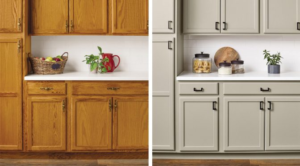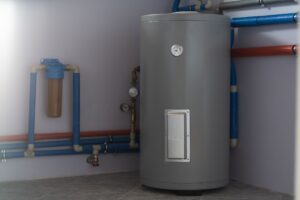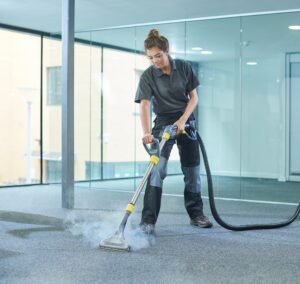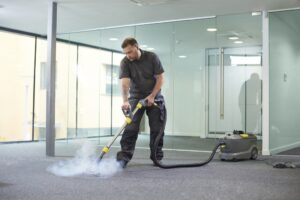Kitchen Remodel Richmond VA can be as simple as a cosmetic refresh or as involved as a total gut. Regardless, the timeline will depend on the scope and objectives of the project.
Fabricating countertops, altering a room’s footprint and changing or adding electrical wiring or plumbing will add time to the process. Permits are also required for some work, and may require additional wait times.

Cabinets are a major part of your kitchen and have a significant impact on its overall design. They provide ample storage space, help establish a focal point in the room, and can add a great deal to your home’s value.
The cost of cabinetry accounts for 30% to 40% of your remodel budget, making it one of the biggest decisions you’ll make. That’s why it’s so important to weigh the options carefully and avoid impulsive splurges that may not add value in the long run.
New cabinetry is available in a wide range of styles, materials, and finishes. For example, a slab cabinet is simple and affordable but can be transformed with unique paint colors or hardware. A shaker cabinet, on the other hand, offers a more traditional look and can be elevated with a modern finish.
Custom cabinets are a great option for homeowners who want to take control of the design process and create a truly unique kitchen. They’re more expensive than stock or semi-custom cabinetry, however.
If you’re not ready for a complete overhaul, a less-expensive upgrade option is to replace the cabinet doors and drawer fronts. This can drastically change the appearance of the kitchen without requiring any major construction. Additionally, it’s a green alternative as less material goes into landfills.
Countertops
Countertops are one of the most noticeable features in your kitchen and can dramatically affect your overall kitchen design. Whether your old countertops are damaged or just plain outdated, upgrading to new and stylish materials adds both functionality and aesthetic value.
Counters are typically made from stone, tile, laminate or wood. Natural stones like granite and marble are beautiful and luxurious, but they can be quite expensive. Tiles come in a variety of colors and patterns and are very durable and inexpensive. Laminate is another affordable option that provides the look of wood or stone but is easier to clean and resists stains.
When it comes to choosing materials, consider the overall look of your kitchen and your budget. If you’re planning on selling your home soon, lower-end finishes may be more appealing to potential buyers. However, if you’re planning to stay in your home for several years, investing in higher-end materials will increase the resale value of your kitchen.
One practical upgrade to consider is a waste disposal hole in your countertop to conceal and make trash cleanup easier. This can be easily done by ordering countertops that have this feature pre-drilled or simply boring a hole into the top of your existing countertops.
When installing your new countertops, it’s a good idea to have plastic sheeting up around the house to keep dust from spreading into other areas of your home during the remodel. It’s also a good idea to have appliances in place and to have your counters professionally measured before installation so that they match perfectly. This helps to ensure that your kitchen is as functional as possible during the entire renovation process.
Appliances
The appliances are typically the largest line-item on a kitchen remodel budget and they can have the biggest impact on your new kitchen. However, not all appliances are created equal. You should always focus on choosing appliances that fit your kitchen remodel style while also being practical and functional. For example, if you are going with a modern, contemporary look you may want to choose a panel-ready refrigerator or a built-in cooktop with custom panels that match your cabinets. Similarly, you should consider energy efficiency when selecting appliances. Some appliances like dishwashers and microwaves are now available with an energy efficient option.
Having the right appliances can add value to your home and help it sell faster should you decide to move. Additionally, be sure to choose a brand of appliance that is well-known and popular for its quality and durability. Lastly, if you do opt to splurge on a higher-end appliance be sure to ask your repair man about warranty coverage. Many brands offer extended warranties for appliances that are more expensive than their counterparts.
If your current kitchen appliances are not broken or in need of immediate replacement, you can save some money by simply keeping them until the remodeling is complete. However, you will likely need to find a way to store them for the duration of your kitchen remodel. Depending on the scope of your kitchen remodel, you may need to move them to another room in the house or at least keep them as far away from the construction area as possible to avoid scratches and damage.
Lighting is not a big cost factor in most kitchens but it can be an easy way to give your kitchen a fresh, new look. Consider a mix of different lighting options including dimmable LEDs for a warm, inviting glow in the evening and recessed lights or a pendant for a focal point.
Fixtures
A kitchen remodel isn’t complete without essential fixtures like faucets, sinks and lighting. These are often easy to change and don’t require tearing out walls or ripping up floors, making them a budget-friendly way to make a big impact. Choose styles and finishes that coordinate with your new kitchen theme and design aesthetic to tie everything together.
Backsplashes are a great way to add style and personality to your kitchen. They protect the wall behind the countertops from water, grease and other icky stuff while adding visual interest. They also offer an opportunity to add a pop of color or pattern to your kitchen. Keep in mind that installing a backsplash will increase your overall project costs, particularly if you choose a material with a complex design.
Choosing a new sink and faucet can dramatically affect your kitchen’s appearance. Choose a size that suits your storage and workflow needs while factoring in maintenance and care preferences. Then, decide whether you prefer a stainless steel or granite composite material and installation type that matches your budget and style.
Upgrading to energy-efficient appliances and lighting will reduce your energy consumption while improving your home’s comfort and efficiency. Look for ENERGY STAR ratings when shopping and consider options like LED lighting that uses less electricity or tankless hot water systems that only heat water when it’s needed.
Changing your kitchen’s fixtures can add a fresh, modern feel to any home. If you’re not ready to commit to a full-scale remodel, focus on the most outdated components and replace them with modern versions. By focusing on what’s important and staying within your budget, you can enjoy your upgraded kitchen for years to come.
Flooring
Flooring is a significant part of any kitchen remodel. It can affect the aesthetic of your space, and it is an important decision because it has to last a long time.
The best choice for your home depends on your lifestyle, design preferences, and budget. Working with a qualified design-build general contractor team can make this decision easier and help you find the perfect product.
One popular option for flooring is hardwood. Wood can add an elegant touch to any kitchen and has a natural look that many homeowners love. However, it is not ideal for areas that experience a lot of moisture. Wood can be damaged by water, which can lead to rot or mold. To prevent this, you can use a waterproof sealer to protect your floors from moisture.
Another durable option for kitchens is tile. This material is easy to clean and comes in a variety of colors, patterns, and textures. There are also many options for tiles that mimic the appearance of other materials, including marble and travertine.
If you are going with a tile floor, it is recommended to install it after the cabinets. This is because installing it before the cabinets can cause damage to the tiles from the weight of the cabinets and other items stored on them.
Some people prefer to install the cabinets first, which can work well if you plan on making changes to your kitchen in the future. However, this method can waste the flooring material as you will have to cut around the cabinets and appliances. It can also be difficult to access plumbing or electrical wiring that may run underneath the cabinets without removing them.








